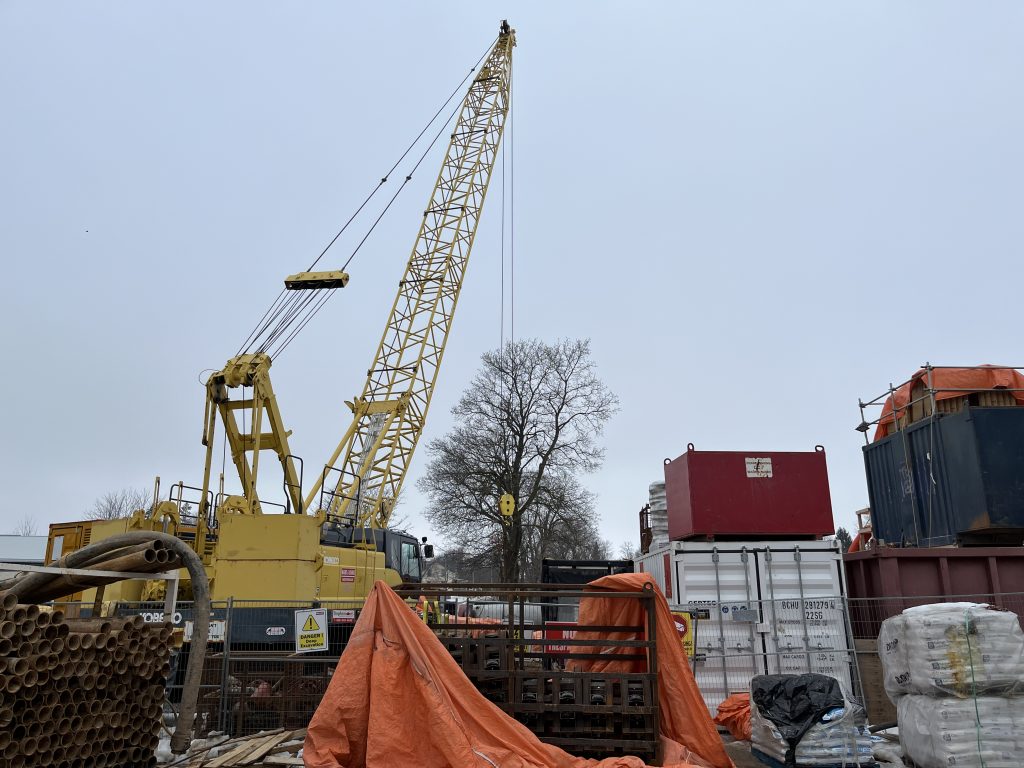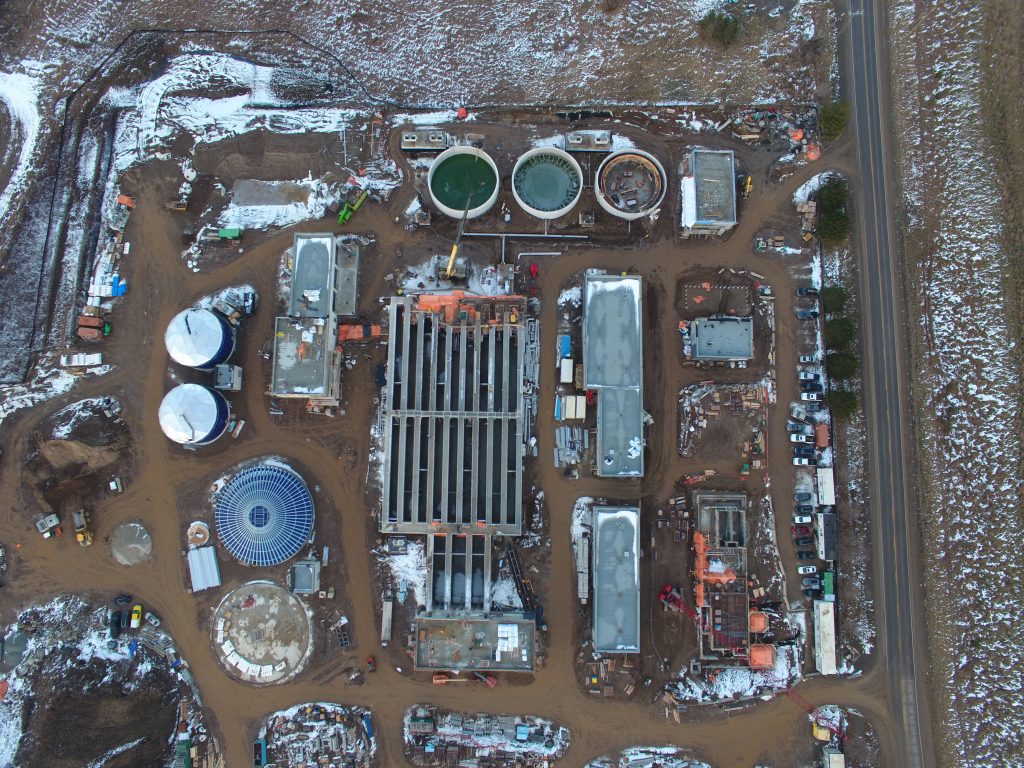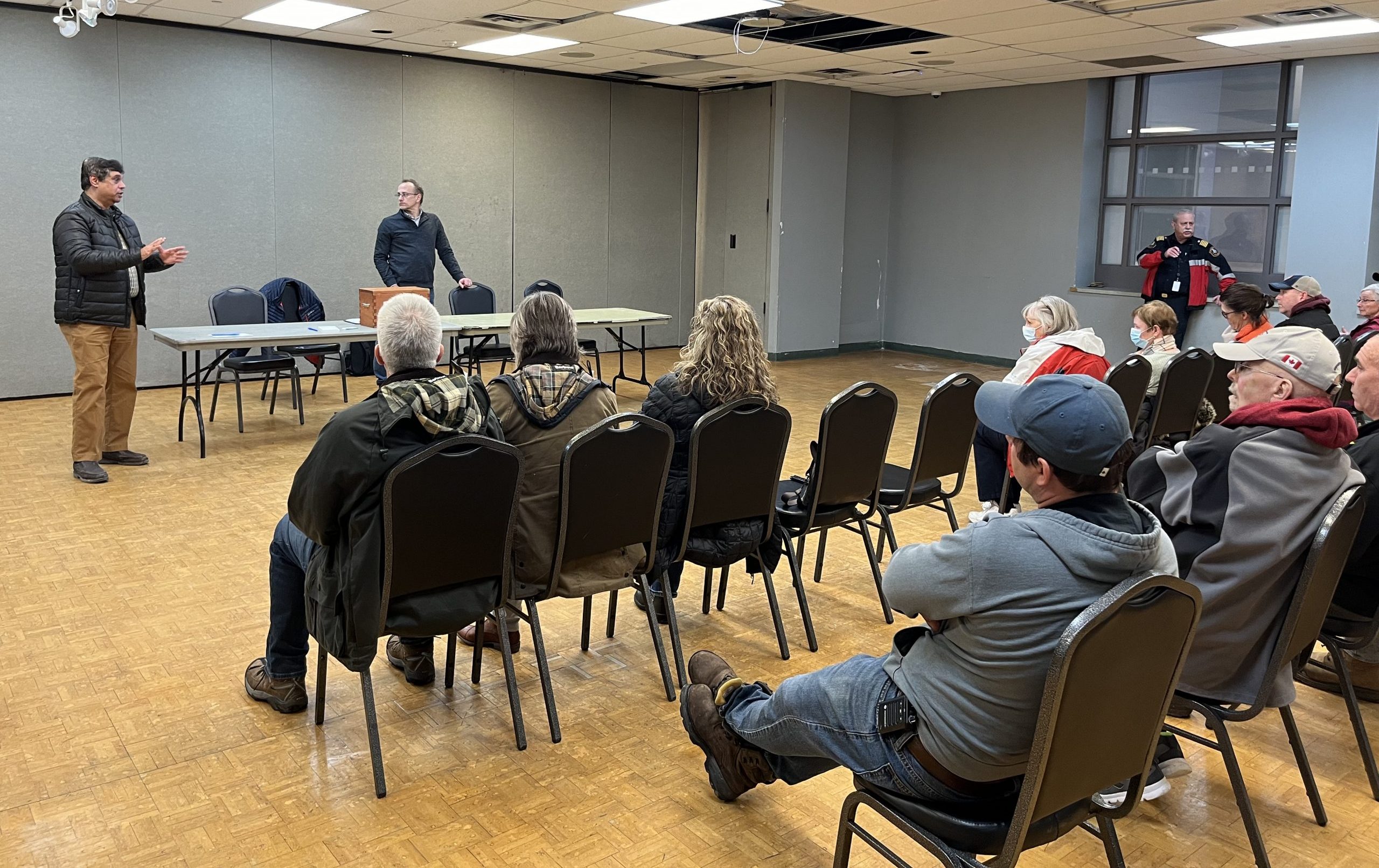HILLSBURGH/ERIN –Around 28 people attended information sessions, held in Erin’s two largest communities last week, to ask questions about the town’s ongoing wastewater treatment plant work.
The meetings were attended by town staff and WSP senior project manager Claudio Micelli.
Around eight people were at the upper level of the Hillsburgh Community Centre on Jan. 31.
Work in that community is progressing faster than originally anticipated; weather has been mild, and ongoing work between Mill Street and Upper Canada Drive is on higher ground, meaning there’s less groundwater to contend with.
Workers will install curbs and sidewalks in Hillsburgh as the weather warms and prepare the roadway for summer paving. There’s a consensus among project managers that the Hillsburgh section will be completed this summer.
In Erin village, excavation of shafts along Main Street is mostly complete, with the exception of two shafts: Lorne Street and at the entrance to the Elora Cataract Trailway.
Excavation has yet to begin at those two locations, Erin project manager Khalid Rahman said.

Construction equipment seen along Main Street in Erin. Photo by Jordan Snobelen
The town is also waiting on permits from Credit Valley Conservation before work on the trail itself can begin; two pipes will be installed beneath the trail between Hillsburgh and Erin for water and wastewater.
Unlike his predecessor, former infrastructure director Nick Colucci, Rahman was apprehensive about providing a hard timeline on when work would be completed in the village because there are too many unknowns.
Gleaned from conversation at the meetings, it’s understood construction in the village will continue throughout this year with work at Lions Park ongoing until the summer of 2025.
It’s uncertain but likely the ongoing Solmar development will be the first group of around 500 homes to supply the wastewater system and get things moving.
It’s estimated around 4,500 new homes will feed into the plant, with 1,500 existing homes to hook up to the system later.

An image captured by drone shows progress in construction of a new wastewater treatment plant in Erin along Wellington Road 52. Submitted photo
Some residents asked what the cost will be to hook up, but Erin Fire Chief and interim CAO Jim Sawkins wasn’t able to give an answer.
Costs will vary depending on each property and the work required to connect.
What is more certain is current residents are at least several years away from having to contend with the costs. Vague guesses tossed around range between five and eight years from now.
Sawkins said he went “hat-in-hand” to the province asking for provincial tax dollars to cover connection costs for residents.
The previous term of council and the current council have made clear residents won’t be forced to connect to the system until the province coughs up some money.
The logical question then becomes how much of the cost will be covered – and nobody at the local level knows.
Though the town is asking for the full cost to be covered, Sawkins said he doesn’t believe the province will provide that kind of money.
A connection bylaw will determine the legal nuances of who connects and pays what — but that’s also a long way away from being realized.
Those who were unable to attend the meetings will have more opportunities to receive updates and ask questions.
According to the town, meetings are being planned on a quarterly basis at varying times to accommodate residents in both communities. An evening session will also be held once a quarter.
More details are available by visiting erinwastewater.ca.




